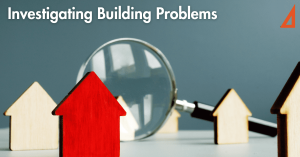Emergency Response Plan
You don’t have to be a weatherman to notice storms are more frequent and fierce. Nor do you have to be a news broadcaster to recall all of the reported residential damage from fire, floods, and wind. Nor do you have to be an accountant to recognize the cost of building repairs are skyrocketing up. What you do have to do is …be prepared.
Being prepared means your community has an Emergency Response Plan (ERP) in place. Disaster planning is all about saving lives; reducing suffering; and minimizing damage. These ERP plans are a group of strategies to protect both community members and their property. Key elements of the plan are Mitigation; Preparedness; Response; and Recovery:
- Mitigation includes identifying threats and eliminating potential danger with preventative maintenance to reduce vulnerabilities.
- Preparedness requires well documented and trained evacuation routes; established muster points; and a system to account for everyone with an emergency contact system.
- Successful Response in an emergency is greatly improved with a quick and decisive response requiring knowing the location of the key shut-off valves and safety features both within and outside of the units. It also includes updated lists of qualified repair contractors.
- The Recovery element of post-disaster management is often overlooked yet vital to the overall success of the community’s future. Recovery is not simply the clean-up after the disaster but a pro-active real estate marketing plan. Whether the disaster issue is a simple sprinkler pipe leak causing flooding and mold in an empty unit or a fire destroying a wing of a complex; the planning is critical knowing what should be done after the final repair contractor’s truck is off the site.
ERP Planning Steps
So how do you start? The board should create and appoint a disaster team made up at a minimum a member of the property management staff and a board member. Residents with skills in insurance; legal matters; electrical systems; HVAC; plumbing; emergency response should be sought to join the team. There are many sources for general outline for an ERP. Your insurance company may have pre-prepared templates of these types of plans for easy customization for your community’s needs. This is very important as we all know every condo community is unique in its own way. High-rise communities will require a more detailed evacuation plan than a community with duplexes or townhouses. Urban condominiums will have different needs than rural or suburban communities. Amenities, special equipment, and landscaping may be important issues in the ERP. Demographics must always be considered as a community of young professionals may not present the same safety challenges as an association with a more senior population.
The written plan needs to be approved by the board. The plan should be easy to access in multiple locations. It should be periodically reviewed and rehearsed. A good plan will have a checklist of steps to be taken; procedures to follow; and basic supplies to have on hand. Your insurance carrier or property manager may also be able to provide disaster training guidance and other resources. Just ask. You may also want to consider seeking training grants or funding through CERT (Community Emergency Response Training).
The basic Emergency Response Plan outline should consider the following:
1. Assessment of disaster risks – both experience and potential
2. Planning – budget and financing
3. Property management coordination
4. Safeguarding important condo documents
5. Ledger of assets – written and digital
6. Communication plan – elderly and special needs; absentees; etc
7. Emergency equipment available – condo and resident owned
8. Lines of authority
9. Evacuation plan
10. Insurance audit
11. Vendor and contractor call list
12. Recovery plan
Future storms will not reduce in intensity. Weather related power outages will increase. Unit owners are becoming more reliant on reliable power for medical safety, home business needs, and family education. If emergency power sources are not currently available, the association should consider how emergency generators might be introduced into the community. Providing suggestions for unit owners’ personal protection during severe weather events can be in the ERP including recommendations for maintaining an inventory of flashlights; batteries; charged phones; a supply of food; and medical supplies/ prescription drug availability.
Post-Disaster Market Value Perception
The common denominator need of all condo unit owners is protection of their net worth. Therefore, it must be repeated, after any disaster, the impact on market value and sale potential must be considered. It should never be assumed just because everything has been brought back to ‘as good as it was’ before the disaster, that the real estate market perceives this to be the case. The association may need to take very positive steps to approach the local real estate professionals to clearly demonstrate the physical state of the current condo complex. This could include certified inspection reports or lab test results or whatever it takes to make market perception the reality.





 Like people, no two condos are the same. Establishing methods of managing all types of condos by the same rules and standards is fruitless. A 40-year-old high-rise condo on the beach in York County needs a different maintenance plan than a community of new wood-framed duplexes in Franklin County. Following the collapse of the Champion Towers in Surfside, Florida, state legislators and condo industry leaders across the country have been scrutinizing past best practices of condo capital repairs with mixed results. As an example, earlier this year Florida signed into law the “Florida Condo Safety Act.”
Like people, no two condos are the same. Establishing methods of managing all types of condos by the same rules and standards is fruitless. A 40-year-old high-rise condo on the beach in York County needs a different maintenance plan than a community of new wood-framed duplexes in Franklin County. Following the collapse of the Champion Towers in Surfside, Florida, state legislators and condo industry leaders across the country have been scrutinizing past best practices of condo capital repairs with mixed results. As an example, earlier this year Florida signed into law the “Florida Condo Safety Act.” Ice forming inside of pipes often is not the cause for pipes breaking. Rather, water pipes
Ice forming inside of pipes often is not the cause for pipes breaking. Rather, water pipes  Make sure you actually need one, too
Make sure you actually need one, too